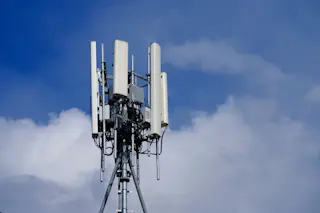For more than a decade, stents have propped open closed coronary arteries in a million people every year. But in about a fifth of these cases, scar tissue reblocked the artery. Now a new design, with a medical coating, prevents most scar tissue from forming. We talked to its creators.
Stent angioplasty is a less invasive alternative to coronary bypass surgery. A small, flexible stainless-steel mesh tube is inserted into clogged arteries and then expanded, allowing the resumption of blood flow to the heart. Cut with lasers, stents are tiny, measuring up to an inch in length and .04 of an inch in diameter before expansion. The side struts are .005 of an inch thick.
Inserting a stent takes about 30 minutes. First, cardiologists typically push a fine plastic-and-wire catheter through a quarter-inch incision in the groin into the femoral artery. Then, following their progress on a fluoroscope, the doctors ...














